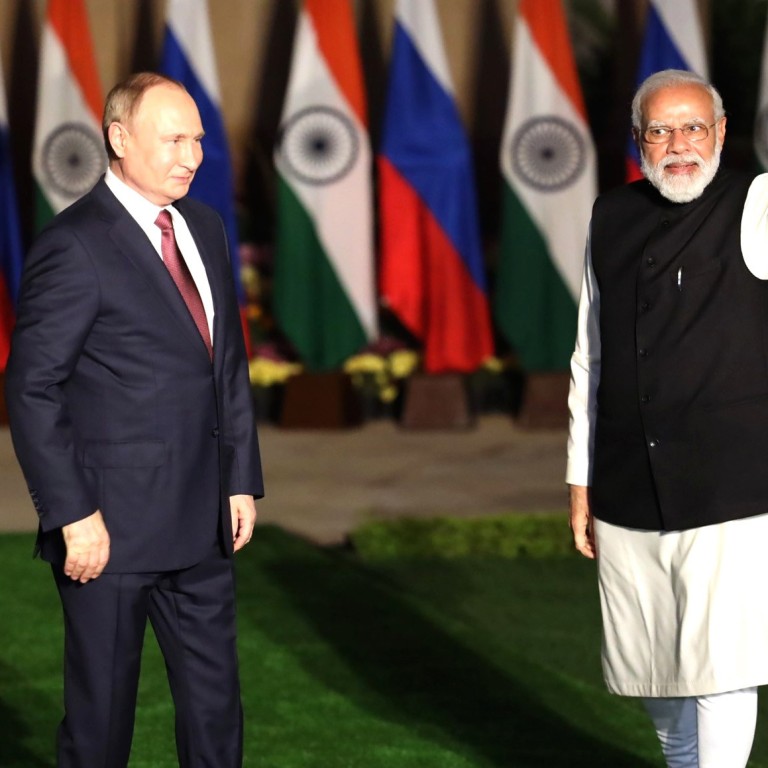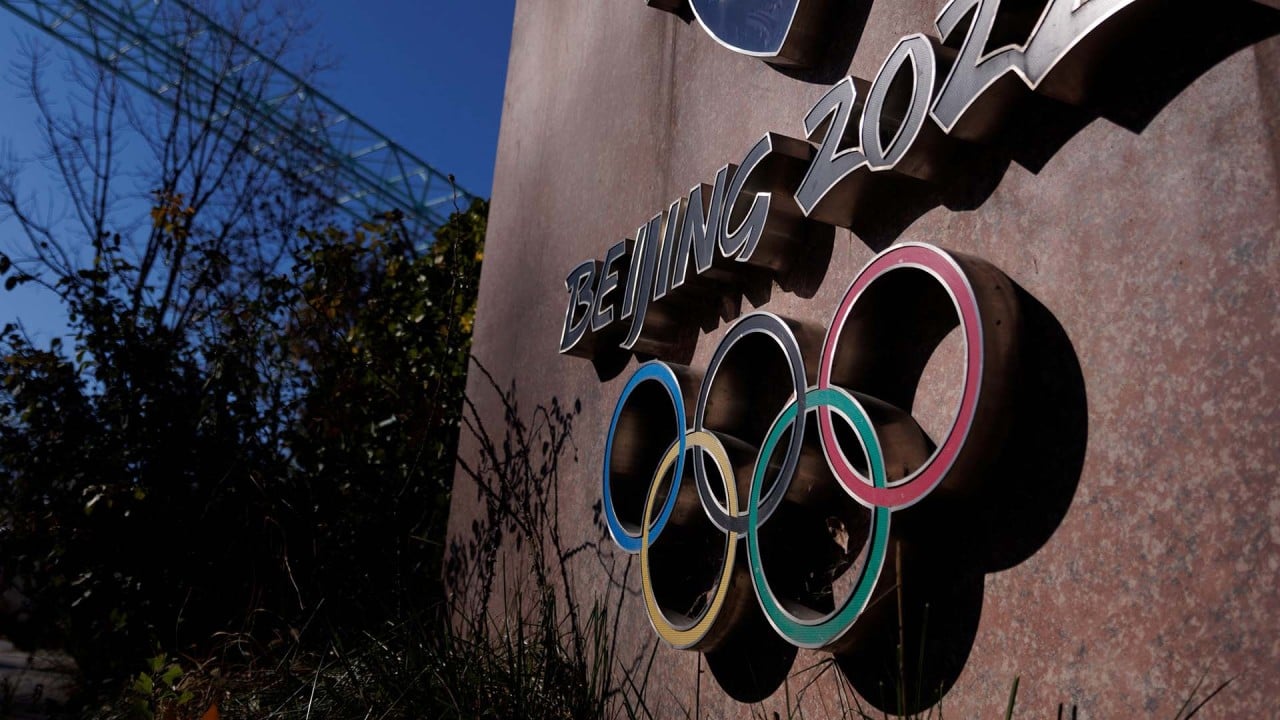
The messages for China and the US in Putin’s trip to India
- The Russian president’s rare international visit was a chance for Moscow to strengthen defence ties with New Delhi
- It was also a signal of how far its interests extend into conflicts with other world players, analysts say
A joint statement issued after their talks confirmed their intention to “strengthen defence cooperation, including in the joint development of production of military equipment”.
The whirlwind trip was not only a boost to defence ties between the two countries, it was a message to China, which is in the midst of a protracted stand-off with India in the Himalayas. It was also a reality check for the United States, as its feud with China deepens in the Indo-Pacific, analysts say.
Despite the long-standing ties, Russia and India would seem to line up on opposing sides.
Yun Sun, a senior fellow at the Stimson Centre in Washington, said the China-Russia relationship was often simplified as both being in the same camp against all others but in reality there were more factors at play.
“If China finds Russia’s relationship with India irritating, India should find Russia’s relationship with China even more irritating – with all the strategic coordination and alignment, India would be totally sidelined,” she said.
“But in reality, India never hoped for Russian exclusivity. In comparison, China’s bar appears to be much higher – that if Russia is China’s friend, it should see all China’s enemies as its own enemies. In reality, that is simply not the case.
“The China-Russia alignment is motivated by the common threat perception about the US. That threat perception does not extend to other countries, including India and Southeast Asian countries.”
Mark N. Katz, a professor of government and politics at George Mason University, said Putin’s trip had a message for the other players.
“For Putin, his visit to India shows that despite the closeness in US-India ties, India is not siding with the US in its increasingly acrimonious relations with Russia,” Katz said.
“Similarly for Modi, Putin’s visit to India shows that despite the closeness in Russian-Chinese ties, Russia is not siding with China in its increasingly acrimonious relations with India.”
A highlight of the visit was the announcement that delivery of Russia’s S-400 advanced missile-defence system had started this month, as a part of a US$5 billion weapons deal signed in 2018.
India’s decision to buy the Russian system was in defiance of US threats of sanctions but it was a calculated move very much with China in mind, according to Jagannath Panda, head of the East Asia Centre of the Institute for Defence Studies and Analyses in New Delhi.
“The [S-400] deal is likely to give New Delhi a ‘boost’ with regards to the current tensions because it improves their defence capabilities to such an extent that the risk of US sanctions and further complications with China are worth taking,” he said.
“India is very aware that any US sanctions would ultimately undermine the security goals of the US in the Indo-Pacific with regards to China and so they will be unlikely.
“And, secondly, because despite Russia reiterating that ‘no extra-regional player’ should be involved in the border tensions, China has already purchased defence equipment from Russia and so New Delhi feels it can do the same.”
Sun Shihai, director of the China Centre for South Asian Studies at Sichuan University, also said India’s continued purchase of advanced weapons from Russia would strengthen its military in relation to China.
But Sun played down the impact of the S-400 deal on the border stand-off between China and India, which has shown little sign of resolution 19 months after flaring back to life.
“Neither China nor India wants to go to war over their border dispute. And I don’t see any hopes of a solution considering that little progress has been made so far in the numerous negotiations over the past year,” he said.
“Instead, both sides have tried to build up their defences, while focusing on preventing the escalation of tensions.”
China-India border row: ‘troops set to stay put’ and tough out winter
Danil Bochkov, an expert at the Russian International Affairs Council, said that despite rising suspicion in Beijing towards Moscow, China “would not question its ‘historically best’ relations with its closest partner in order to slap India, at least not at the moment”.
“The visit confirms that Russia sees India as the second most important strategic partner among the world’s major powers. Even though China is no doubt Russia’s main strategic partner, and perhaps a quasi-ally, Moscow does not want to become overly dependent on China,” he said. “Neither American nor Chinese hegemony is acceptable to Russia.”
The New Delhi trip also showed that Russia maintained neutrality on the India-China border dispute, he said. “In fact, Russia remains a key stakeholder in resolving the India-China border conflict, since normal relations between Beijing and New Delhi are a vital condition for the realisation of Moscow’s vision of Greater Eurasia, which is in essence the project for creating a concert of Eurasian powers.”
While Indian officials and media have tried to spin Putin’s visit as a symbolic sign of political support, Katz cautioned that Moscow may not agree with it.
India deploys US-made weapons on disputed border with China
Gal Luft, co-director of the Washington-based Institute for the Analysis of Global Security, agreed that Putin’s India visit was a shrewd diplomatic move.
“From a military perspective Russia is to India what the US is to Australia. Russia is a source of advanced military technology like fifth-generation combat aircraft, nuclear submarines and the S-400,” he said.
“It is also a reminder that Putin is not only a power broker, a catalyst and a disrupter on the small and middle power level like in Syria, Iran and Afghanistan but also at the great power level.
“He can shape the strategic environment of the Indo-Pacific just as easily as he can derail Western designs in Eastern Europe, the Persian Gulf and Central Asia. This message, ahead of the talk with Biden, could not have come at a more opportune moment.”



